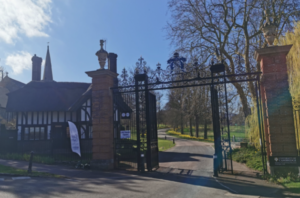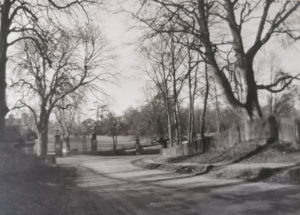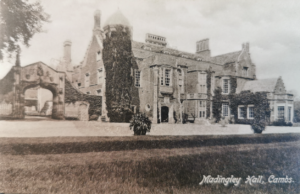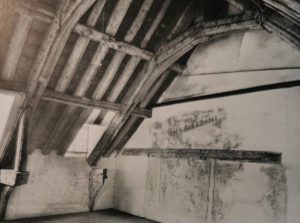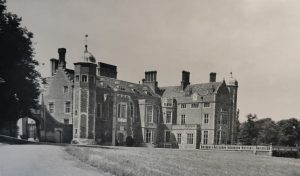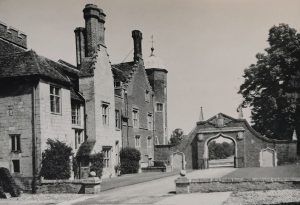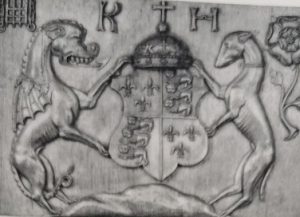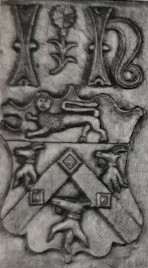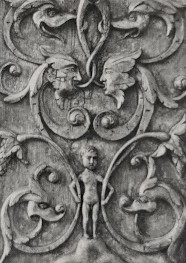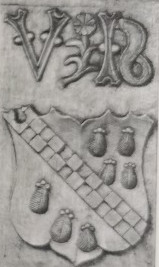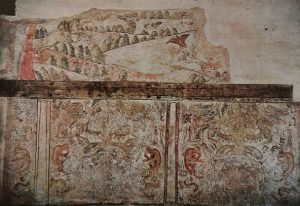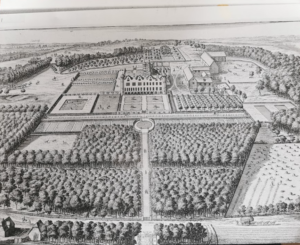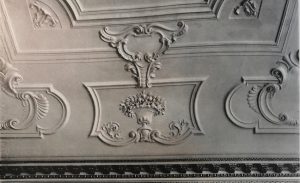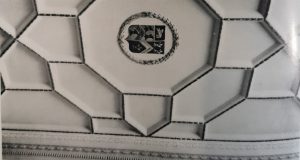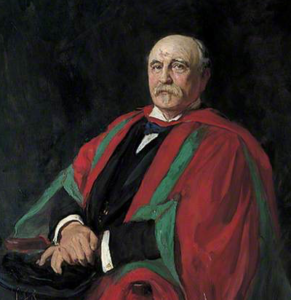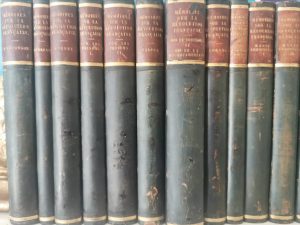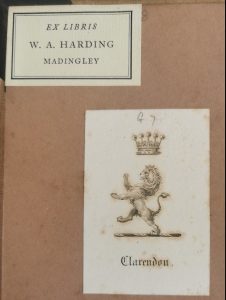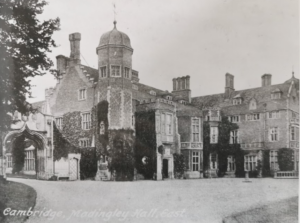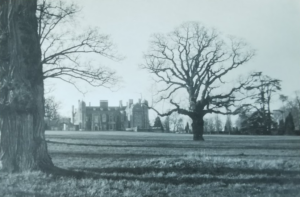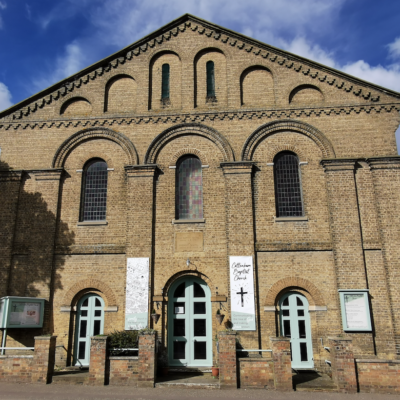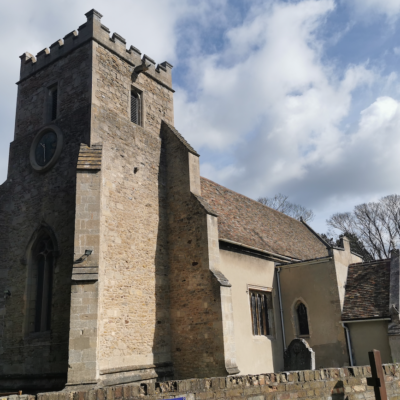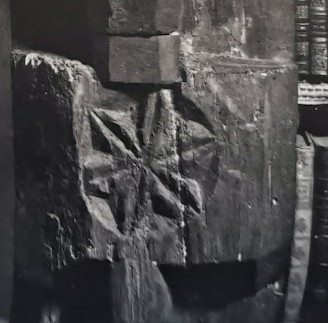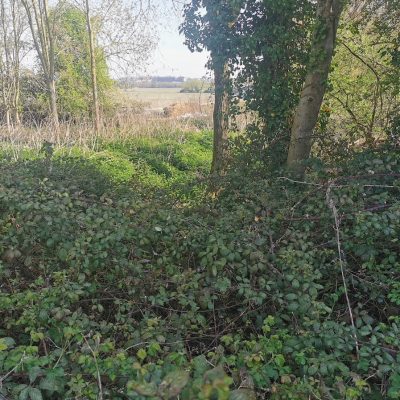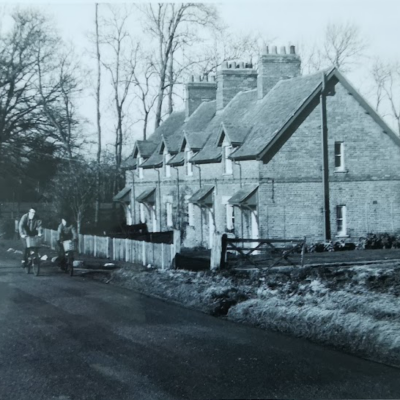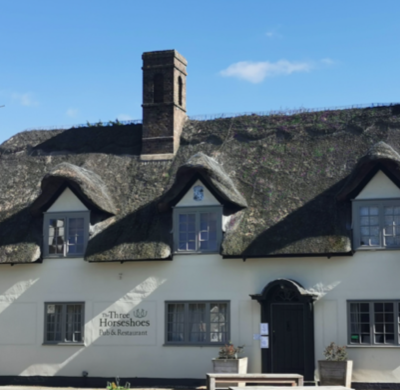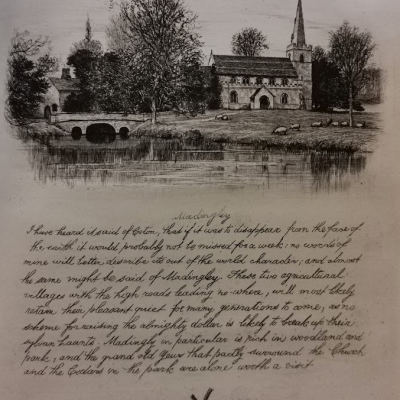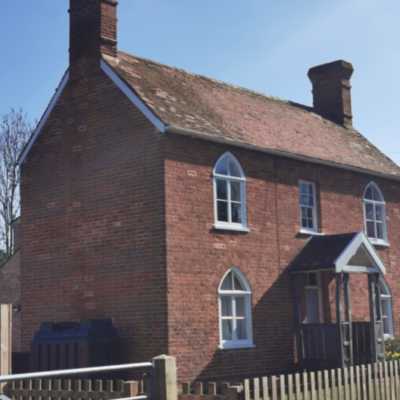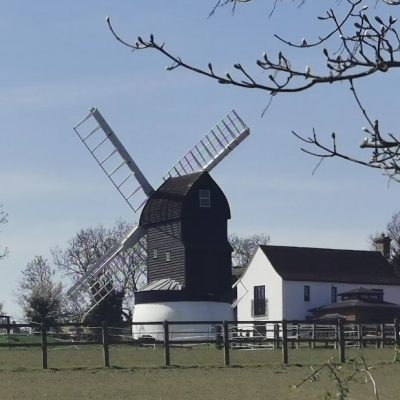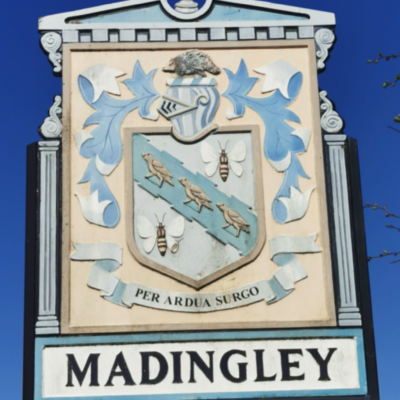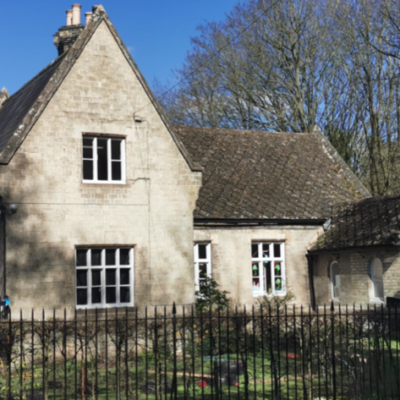Search by topic
- archaeology
- Building of Local Interest
- chapel
- charity
- church
- crime
- dressmaker
- fire
- Great Eastern Railway
- Listed building
- Mapping Relief
- medieval
- oral history
- poverty
- Public House
- Religious House
- Roman
- scholar
- school
- Then and Now
- tudor
- women
- work
- world war one
- world war two
Search by text
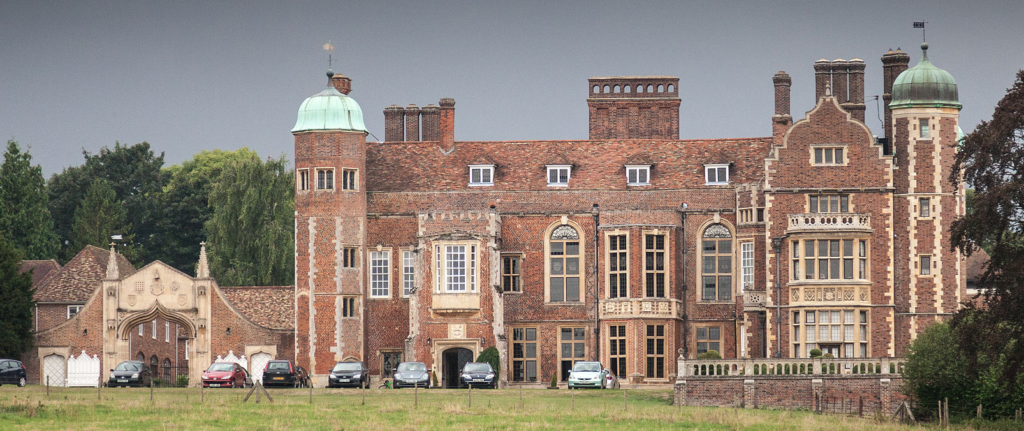 Madingley Hall
Madingley HallMadingley Hall
History of Madingley Hall
The website of Madingley Hall can be found here:
Listed building:
https://historicengland.org.uk/listing/the-list/list-entry/1000627
Mansion House. Mainly mid and late C16, but with alterations and additions of C17, C18, C19 and early C20. Red brick with burnt brick diaper work, and limestone dressings of reused, coursed stone probably from Anglesey Abbey.
Icehouse. C18-C19. Brick. Round in plan.
Sham Bridge. Mid C18. Red brick with parapet partly repaired, and three round headed arches with keyblocks on the north side, the central arch being larger. Capability Brown redesigned the gardens at Madingley for Sir John Hynde Cotton, the fourth baronet, in 1756. This sham bridge is associated with these works.
Lodge. 1908-9. Brick, painted and applied timber-framing with half-hipped thatched roof and tall red brick stacks with projecting capping.
Kitchen garden wall. Mid-C18 and C20 repairs. Red brick, with some random burnt brick, and original moulded brick coping remaining in centre of east wall. Garden divided into two by cross wall, also mid C18
Gateway formerly at Old Schools, Cambridge (demolished 1754) and brought here by Sir John Hynde Cotton in 1758. Red brick and limestone ashlar. Large ogee archway of three orders and panelled mouldings flanked by niches in two tiers.
Gates and gatepiers. Probably c.1908. Rusticated red brick piers surmounted by reproduction stone urns similar to those from Histon Manor and now adorning the c.1908 brick piers in the north wall of the kitchen garden. Elaborate wrought-iron gates with C and S scrolls flanking full achievement of Harding Coat-of-Arms and initials W.H.
Statue representing Albert, Prince Consort. 1866. Signed J.H. Foley, R.A. Sc. White marble on grey marble plinth. Over life-size figure in robes as Chancellor’of Cambridge University.
Terrace retaining wall and balustrade. 1913-14. Brick and limestone. Arcaded balustrade with square piers enriched with jewelled panels surmounted by ball finials with obelisks at the corners.
There is a ghost story associated with the house. It is supposed to be that of Lady Ursula Hynde. She was the mother of Sir Francis Hynde of Madingley (1532 – 1596). Francis continued the construction of Madingley Hall in c.1588 – 1591 and probably made use of building materials from the church of St Etheldreda at Histon which was demolished about this time. It was distress over this event that is supposed to have distressed Lady Ursula, even though she died in 1555.
1657 Madingley Hall features in the witchcraft allegations involving Mrs Morlin of Longstanton:
1851
Philadelphia Cotton, 88, landed proprietor, b England
Philadelphia Letitia, 62, b London
Susannah Gibbons, visitor, 40, landed proprietor, b Girton
Marra Susannah Gibbons, visitor, 9, b London
Charlotte Gibbons, 17, b Girton
Jane Mylon, 51, housekeeper, b London
Sarah Lavy, 39, ladies maid, b Berks
Elizabeth Bromwich, 49, ladies maid, b Warwick
Ann Ward, 22, housemaid, b Norwich
Elizabeth Elbridge, 26, kitchen maid, b London
Charlotte Mathews, 19, young ladies maid, b Cambridge
Thomas Irving, 46, butler, b Leics
Frederick Ambrose, 26, footman, b Suffolk
Charles Elbourne, 23, groom, b Cambridge
Jonah Friend, 26, valet, b London
George Gilby, 15, errand boy, b West Wratting
Joseph Gibiston, 32, gardener, b Essex
Lacchens Frisby, servant of visitor, 26, b Cambridge
The Museum of Cambridge was gifted in 1946 a baby’s cradle which had belonged to the Cotton family.
1881 (Hall)
Henry Hurrell, 65, widower, land owner, b Newton
Henry William, 23, graduate Cambridge University, b Harston
Anna, 22, b Harston
Maud, 18, b Harston
William, visitor, 18, student, b Lincolnshire
Sarah Munston, 23, housemaid, b Peterborough
Elena Fuller, 16, housemaid, b Newton
Frederick Johnson, 14, page, b Madingley
In 1851 Henry Hurrell was living at The Manor, Newton.
In 1861 & 1871 Henry Hurrell is living on the High Street in Harston
He had married Henrietta Metcalfe of Little Shelford in 1855. She died in 1866.
1891
Henry Hurrell, 75, farmer, b Newton
Henry W, 33, b Harston
Arthur, 31, b Harston
Annie, 32, b Harston
Maude, 28, b Harston
Mary Cornell, 31, b Newton
Susannah Sutton, 21, b Essex
Elsie Warren, 18, b Harston
Frederic Parker, 19, b Rampton
1901
Henry Hurrell, 85, farmer, b Newton
Henry W, 43, b Harston
Annie, 42, b Harston
Maud, 30, b Harston
Georgina Burgess, 59, cook, b Chesterton
Mary Cornell, 41, housemaid, b Newton
Ellen Desborough, 15, housemaid, b unknown
Walter Loakes, 15, manservant, b Cambridge
In 1911 H W Hurrell was living in Great Shelford.
Colonel Thomas Walter Harding was High Sheriff of Cambridgeshire in 1904. He was appointed High Steward in 1907.
1911
Thomas Walter Harding, 68, engineer, b Yorks
Annie Haycock Harding, 64, b Yorks
Fanny Buller, wife’s sister, 61, private means, b Yorks
Margaret Anderson Eaden, 70, servant, b Scotland
Eliza Augusta Emery, 48, servant, b Hants
Ellen Johnson, 59, servant, b Madingley
Ruby Johnson, 24, servant, b Madingley
Rhoda Agnes Draffie, 23, servant, b Cambs
Review of *Tales of Madingley* by Col. T. Walter Harding (1912)
*Tales of Madingley* is a romance grounded in the local history of Cambridgeshire, weaving together the pastoral ambience of the countryside with the genteel drama of estate life. Written by Col. T. Walter Harding, the book offers readers a glimpse into the traditions, character, and quiet conflicts surrounding Madingley Hall and its environs. Harding’s narrative isn’t grand in ambition; rather, its strength lies in evoking place—green fields, aged manor walls, and the social rhythms of village life. The prose is suitably decorous and old-fashioned; dialogue and plot elements reflect Edwardian sensibilities, occasionally feeling constrained by the social mores of the time. Readers seeking depth of psychological insight may find it light, yet those drawn to local colour, heritage, and romance in historical settings will discover much to enjoy. The book speaks with affection for its locale, with Harding showing genuine respect for the people and landscapes he describes. Overall, *Tales of Madingley* is a charming, modestly scaled novel: not a tour de force, but a pleasant and evocative read—especially for those interested in Cambridgeshire’s past or the subtleties of rural English romance. (AI 2025)
1921
Thomas Walter Harding, 78, engineer, b France
Annie Haycock Harding,76, b Yorks
Fanny Buller, wife’s sister, 71, , b Yorks
Catherine Livingstone Smith, servant,17 , b Manchester
Louisa Ann Jackson, servant, 37, b Ely
Florence Alice Allen, servant, 15, b London
Eliza Augusta Emery, 57, Ladies maid, b Hants
Rosamond Harding‘s father inherited the Hall in 1927:
1927 On the death of Col. Harding, Rosamond’s father inherited Madingley Hall, a magnificent mansion built c.1543, which then became their family home. Here she was in her element, enchanted with the Elizabethan surroundings, lovingly restored by her grandfather. She had previously visited many times. When Col. Harding held a Elizabethen Ball some years before, Rosamond came in the character of a page to her mother Adela, who acted the part of Queen Elizabeth – recreating the atmosphere of Tudor England. Madingley was now Rosamond’s home, and living there had a profound effect on her outlook. At this time, though she had no qualifications of any kind, she began research for her Ph.D., financed by her father, and tutored by Prof. Edward Dent.
Contribute
Do you have any information about the people or places in this article? If so, then please let us know using the Contact page or by emailing capturingcambridge@
License
This work is licensed under CC BY-NC-SA 4.0





